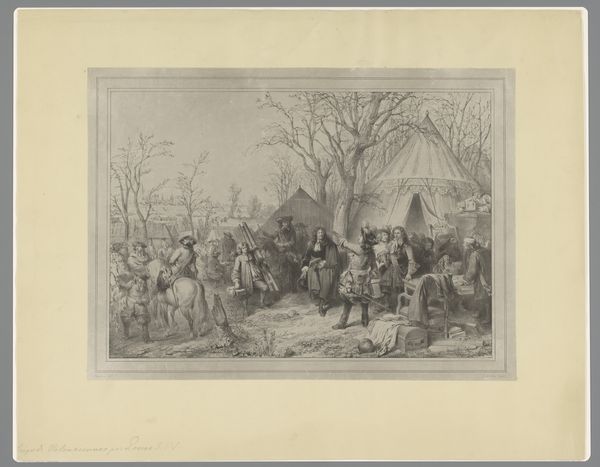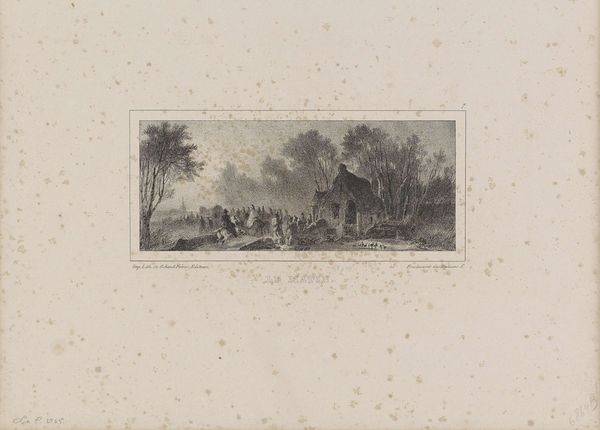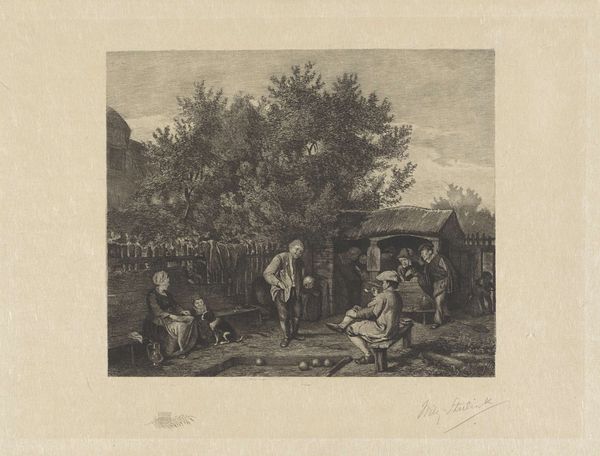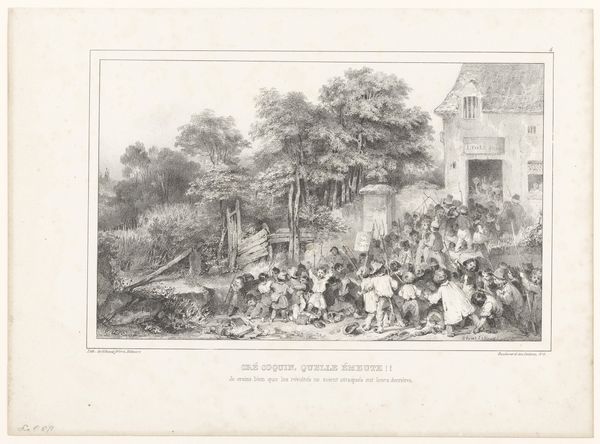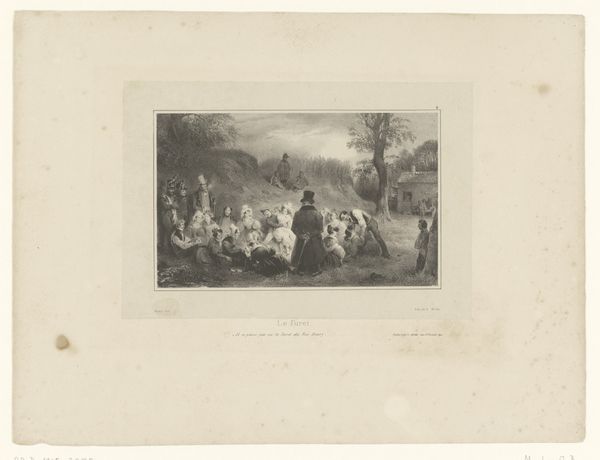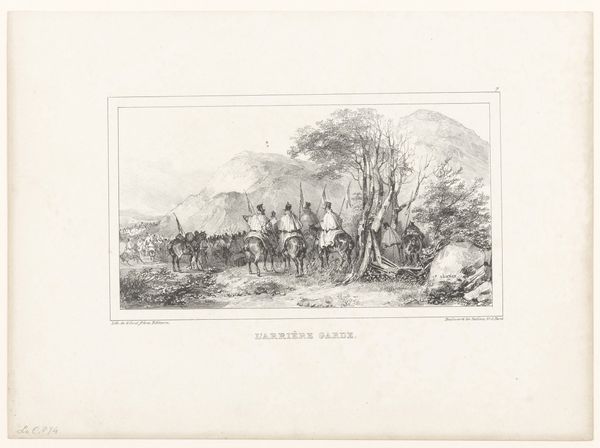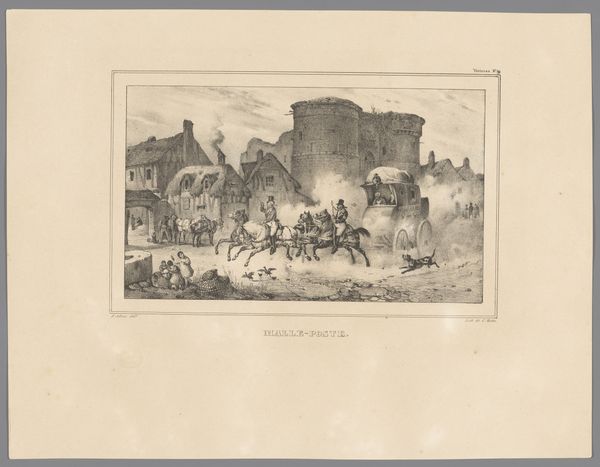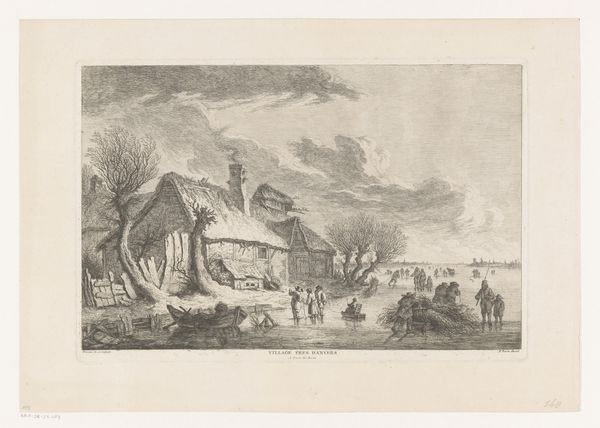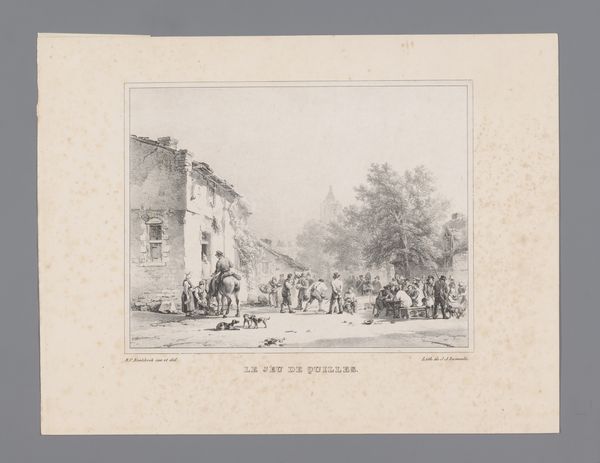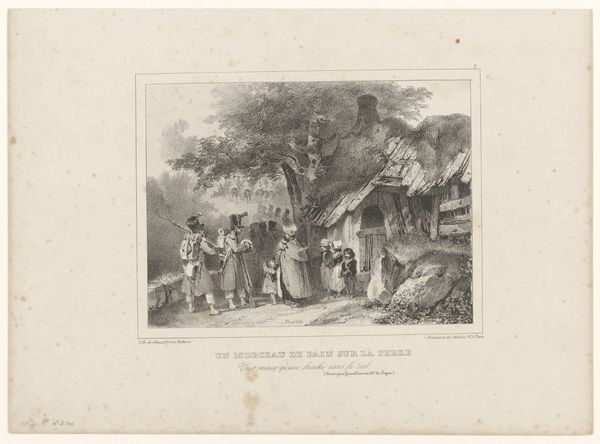
drawing, lithograph, print, paper, ink
#
drawing
#
water colours
#
narrative-art
#
lithograph
# print
#
paper
#
ink
#
romanticism
#
cityscape
#
genre-painting
#
mixed medium
#
watercolor
Dimensions: height 245 mm, width 340 mm
Copyright: Rijks Museum: Open Domain
Curator: Here we have Nicolas Toussaint Charlet's "A Scuffle, 1832," rendered with lithograph, ink, and watercolors on paper, here at the Rijksmuseum. It's a fascinating look into urban unrest of the period. Editor: Whew, it feels like I walked right into the middle of it. Dense, crowded, and with this swirling sense of movement that’s kind of exhilarating and unsettling at the same time. The muted tones amplify this agitation, and even make the piece feel cold. Curator: Exactly. Charlet captured the spirit of social upheaval through the lens of genre painting. In the post-Napoleonic era, street scuffles were almost performances of public dissent. Watercolors add depth, don't they? Editor: They do. But look how deftly he handles light and shadow – it adds a dramatic intensity that belies its modest scale. And that windmill in the background! Juxtaposed against the chaotic throng, it suggests maybe something more significant than just an ordinary fight brewing beneath the surface, doesn’t it? Like societal pressure slowly pushing the common person toward resistance. Curator: Precisely! It subtly embeds a broader socio-political reading into an ostensibly simple street brawl. The placement of figures creates implied relationships within this scuffle that hint at class tension. Consider that backdrop; the architecture and figures create a sense of claustrophobia for those participants in the street who are further from its perceived comfort. Editor: Ah, you're good, like finding metaphors hidden in plain sight. To me, it just screams, “Watch out for pickpockets!” Though maybe the real theft here is the gradual erosion of societal harmony. Curator: An acute point. In observing such artworks we consider that beyond mere observation, art holds space to witness history through varied, even intimate perceptions. What someone considers mundane, such as neighborhood architecture, to me, it holds much about wealth disparity between then-citizens and that societal force they contended against. Editor: Absolutely, stepping back into the mindset of 1832 truly lets me sense not only what went on outside but within. Curator: Indeed. Charlet's ability to merge individual character study with broader societal critique provides a lens to reflect on public sentiments across time and place. Editor: Right! A deceptively detailed, evocative snapshot pulled from a moment brimming with tension. It speaks to a society far from settled, even amid pastoral surroundings.
Comments
No comments
Be the first to comment and join the conversation on the ultimate creative platform.
